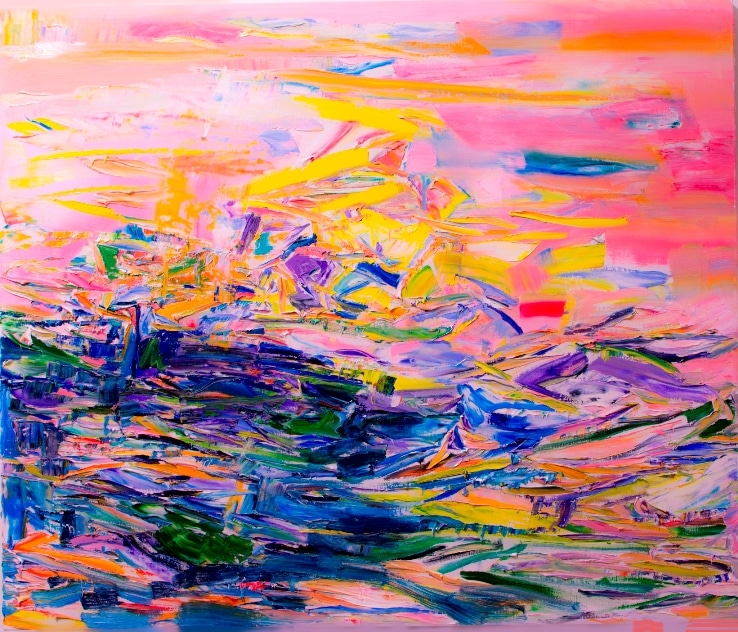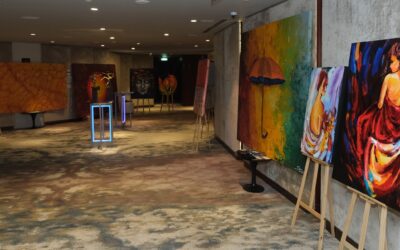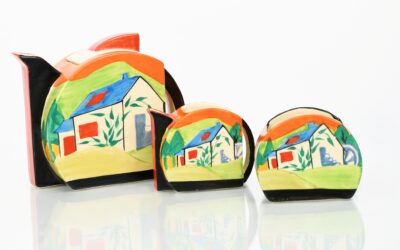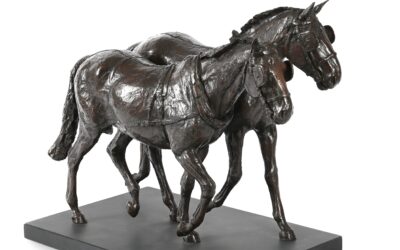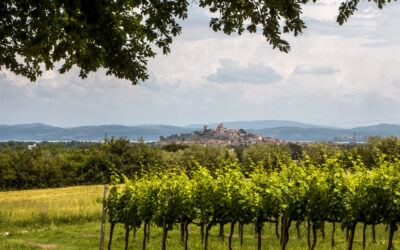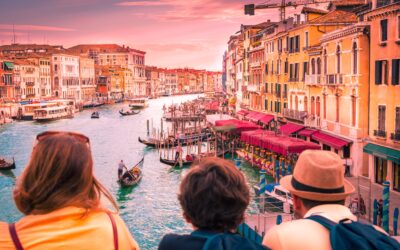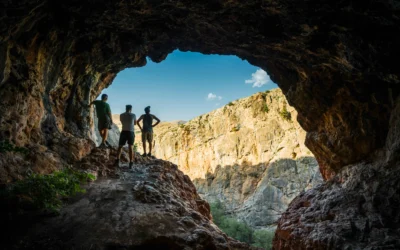Artist Lydia Lee was born in Seoul in 1979 and pursues neutralized and vivid colors through the speed and gestures of brushing. “My gestures with empathy are to express various emotions and the logic of power dominates above.
I work in full control of the space with my memory according to the musical rhythm. Expressions such as baroque exaggeration and grandeur are introduced into the work, and the complex structures of large cities, old ruins, and nature are also the subject of observation. I bring this form into my work as an abstraction without stories. Riddles, paradoxes, criticism, exaggeration, and joy are the motivations for creating my work,” she says. Lydia’s works are not limited to one genre and can be viewed in many ways. For example, she identifies with abstract expressionism, but her artworks have very impressionistic, figurative and symbolic colors and shapes.
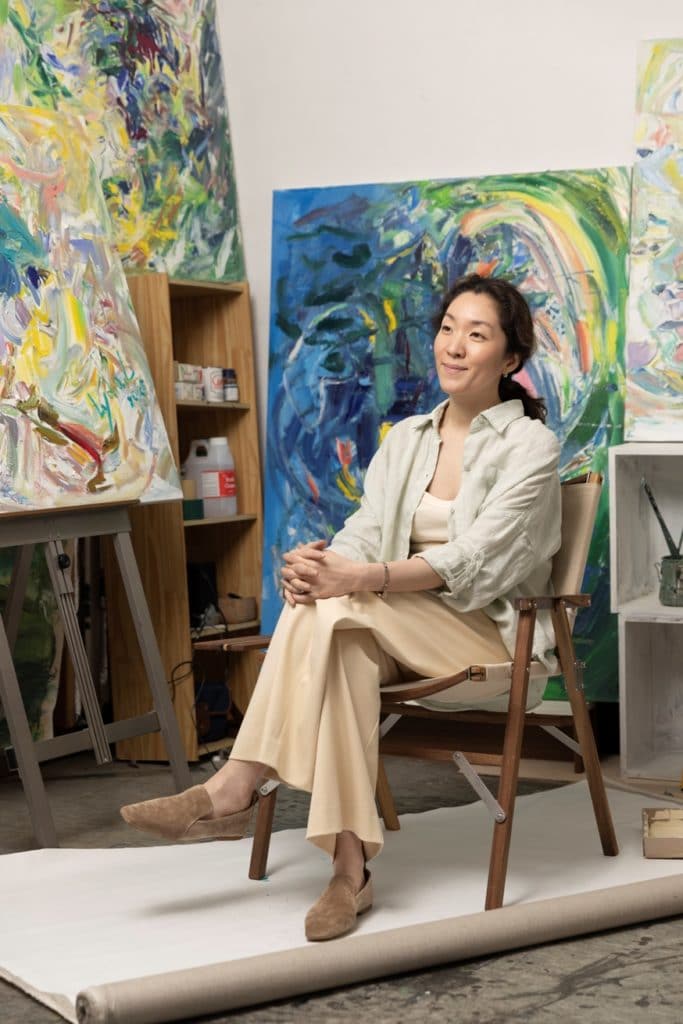
Lydia Lee
What’s your artistic background?
I started learning fine art at 15. I did a lot of practice, set up objects on a still-life table like Cézanne, looked at, observed and painted a statue of a great figure made of plaster. I practiced drawing such things sequentially for a long time before entering college, and in college I started to deal with oil paintings in earnest.
During my four years of college, I found out what I was best suited for. I was quite fluent in how to draw oil paintings in ultra-realistic ways, but I thought that the way of seeing pictures and drawing the same way or the way of seeing and drawing objects directly was not of much value.
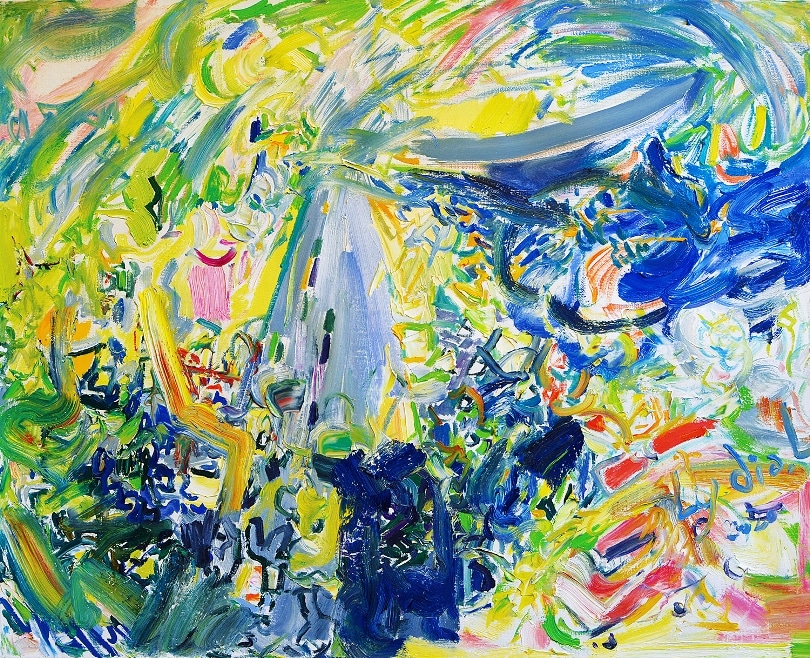
What role does the artist have in society?
Visual arts are important in allowing modern people to come into contact with their philosophies or deepened content in their daily lives and find a suitable balance. People of modern society are very busy with their daily lives so there is less and less time to observe and enjoy different perspectives like visual art. Artists have a critical role that can improve the quality of life by providing diversified points of view and ways of thinking.
What art do you most identify with?
My work is Abstract Expressionism, which is close to Impressionism. It’s like composing music. It can be compared to composers who create symphonies that seem to deal with events under certain memories and emotions. Just as emotions are heightened through pure sound when listening to music, my work also draws emotions through color.
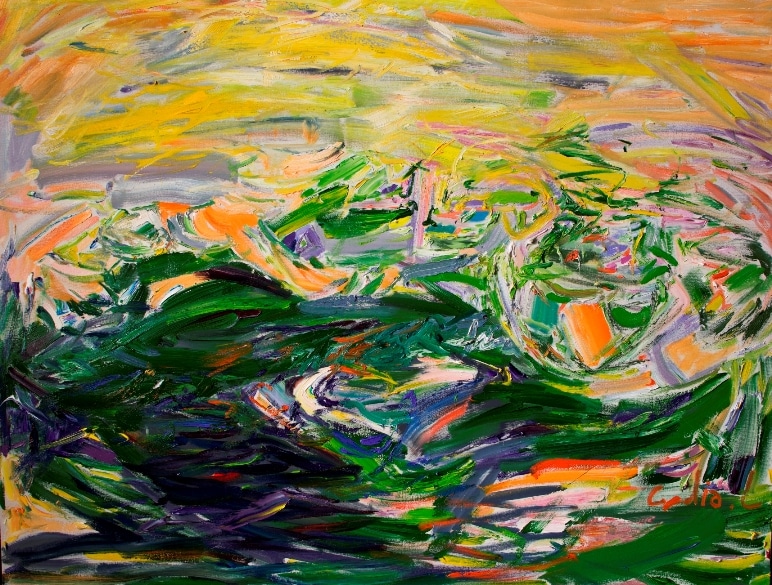
What themes do you pursue?
I have been paying attention to the movement of rhythm for a long time. It is expressed in color. In the end, it is the key to be expressed with only one color, so I consider this to be precious and noble as it is a very difficult work. Since I was young, I have been interested in the work of invisible people and traces of the past, but discovering the rhythm is a very big theme in my work.
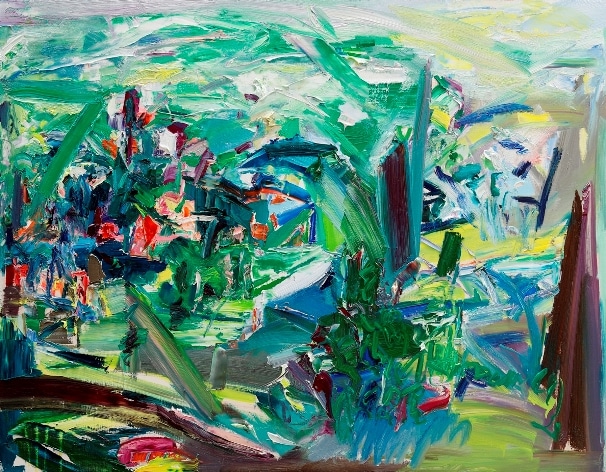
What’s your favourite artwork?
I love the work of Brazilian artist Ernesto Neto’s artworks [ Leviathan Thot 2006 ]. Ernesto Neto, a Brazilian artist who induces multi-sensory experiences through sight and touch through installations as living giant organisms in the world we live in. Even when I drew a picture, I felt that it was unique because I had the experience that my whole body worked. In 2006, the installation work (Levietto) was exhibited under the dome of the Pantheon in Paris for 15 weeks. The biggest reason why Neto’s work, which shakes sensually, is interesting is that the place where the work is installed is a building that symbolizes the rigidity of enlightened rationalism.
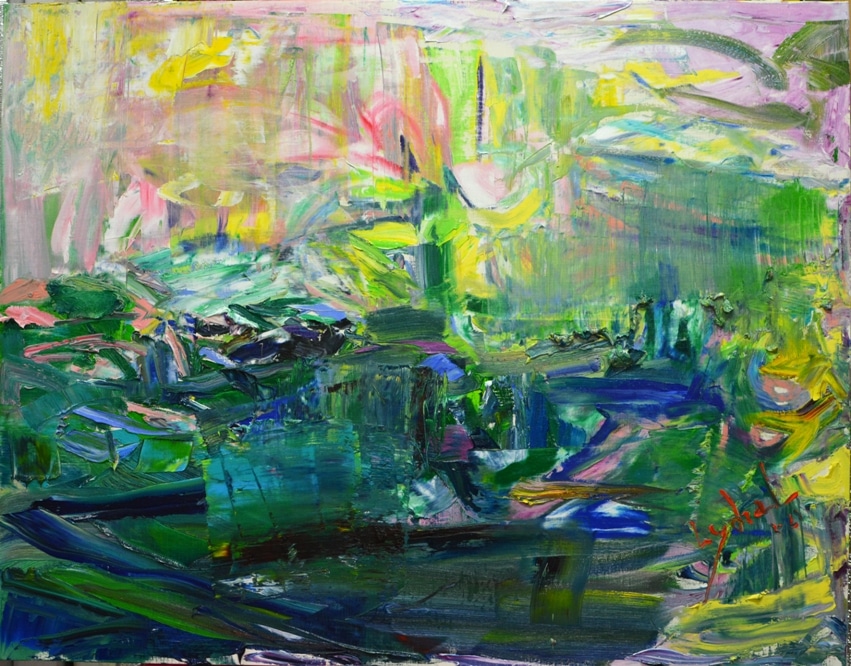
What jobs have you done other than being an artist?
I mainly taught students at the pre-entry stage of art school and also worked as an art director on a movie set. It was to design the atmosphere of the space in detail.
Why art?
I think that the world is so lonely and like a prison. Whether it is the destiny of human beings or the birth of the earth, I seem to be so pessimistic about the history of almost everything. The end is nothing but death and sadness. That is why I am very satisfied with the fact that I am playing a role in art even a little now. It’s because you can think of yourself here and feel that you’re expanding.
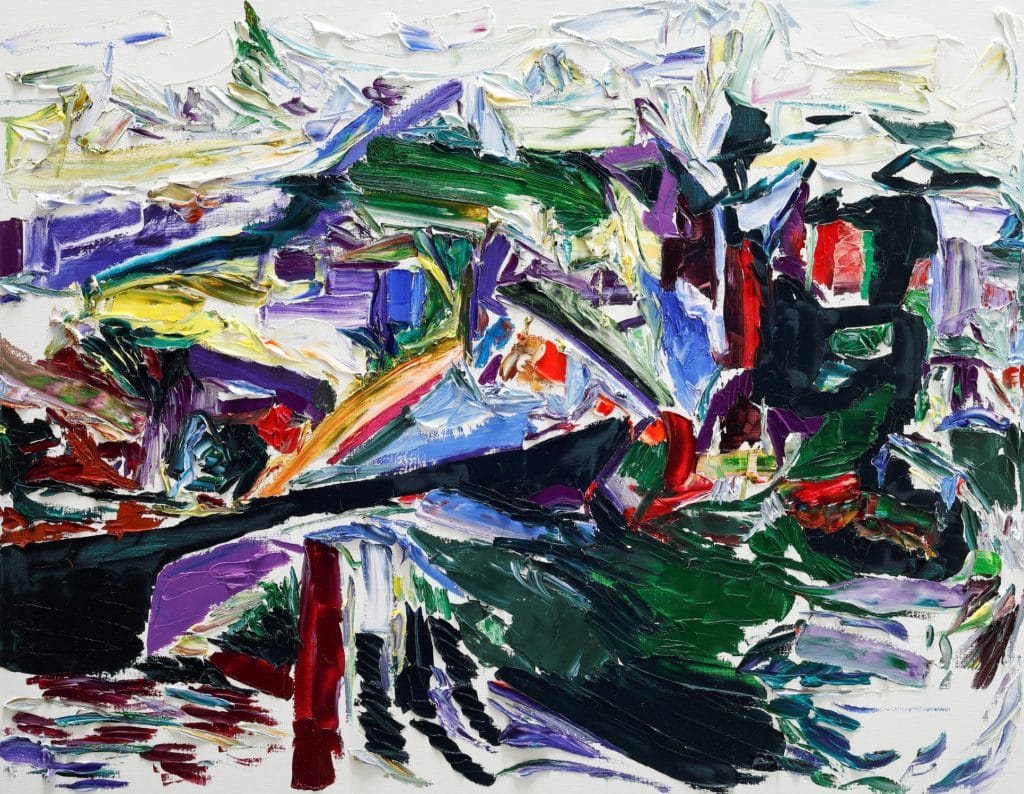
What memorable responses have you had to your work?
The reaction of the American who bought my painting last year is very memorable. He told me in detail about my paintings. My paintings have a pictorial style that culminates through abstractions in which figurative elements are fragmented and said that I really admire this part. He purchased a painting after completing his master’s degree in art history this year. He focused on a female painter who worked on geometric abstraction in his research and told me he was very lucky to have found my paintings.
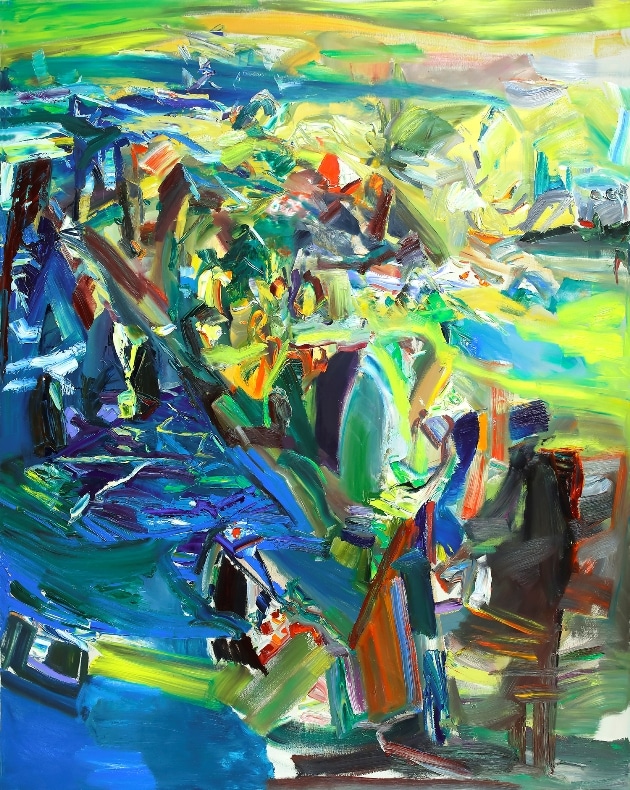
Name three artists you’d like to be compared to.
Joan Mitchell’s paintings have influenced me since I was in college, and it is comparable not only to the stage of completing her work, but also to give her a title after it is completed, and to draw her work with memory and emotion. It is similar in that she draws in a memorized landscape that she carries with her and remembers the feeling of being transformed, and her brushstrokes and colors are light and enjoyable.
I would like to compare it with the spirit in the lump of paint in David Bombberg’s paintings.
That’s what Bombberg left.
I live in a city of steel, but I watch nature. When using the naturalistic form, I removed all irrelevant things from that form. He thought that form was ‘the artist’s consciousness of the mass.’ I completely sympathize with Bombberg’s thinking that vision is also physiological.
I also paint with that spirit. Next is Gillian Ayres, who hasn’t made any formal preparations or sketches, but I am somewhat autonomous. I don’t like drawing rough drawings on paper for the sake of magnification. I want to feel. In what Ayres said, I have the same attitude in the process to some extent, so viewers can see what’s different from her paintings. I crave more order than her.
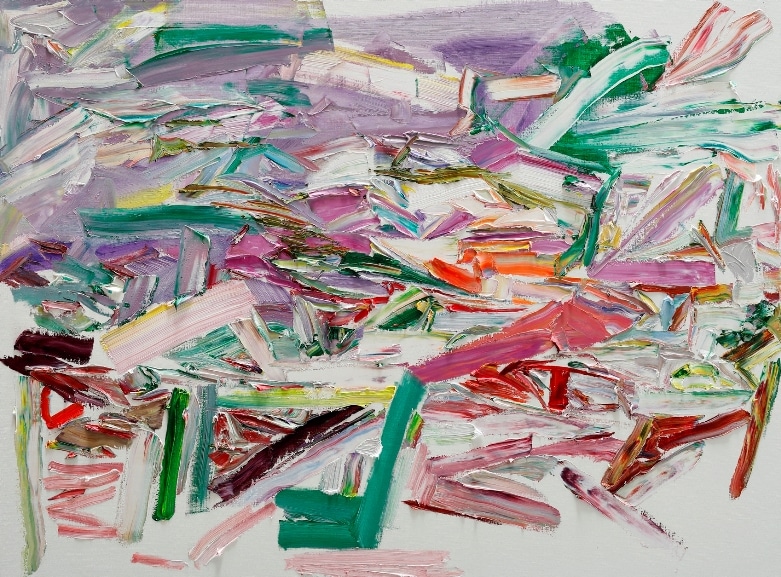
Favourite or most inspirational places?
I like the modern architecture and the bridged metropolis. You can feel depth and perspective in such a space. Among the places I’ve been to, London has a lot of modern architecture, so it was very impressive. The combination of old and modern architecture and the solid stone architecture and delicate collaboration were beautiful.
Fact box:
Website : www.painter-lydia.com
email : [email protected]
https://www.instagram.com/haeeun25


